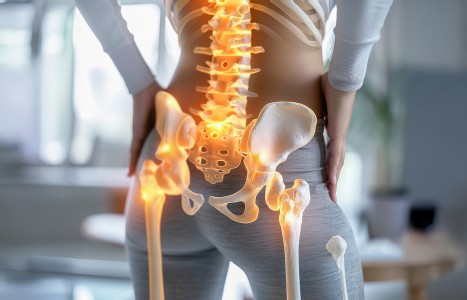Being proactive vs. reactive with tax planning will have a tremendous impact on profitability and long-term wealth creation. Keep in mind, I am not a CPA and I am not giving tax advice. Rather, I’m passing on information that I learned as a practice owner and now implement in my financial planning practice. While not an exhaustive list, here are a few items to contemplate in 2025 as you watch the dollars in your practice.
Management of Sternoclavicular Joint Displacement
The sternoclavicular joint, being a diarthrodial joint which permits rotary motion of the clavicle, serves as the pivot upon which the shoulder girdle engages in motion on the trunk. With internal rotation of the arm, the maximum degree of rotation of the clavicle is achieved resulting in anterior protrusion of the clavicle. Also, elevation of the arm above 110 degrees involves clavicular rotation.
In the event of a fast, forceful forward thrust of the shoulder girdle, a loss or reduction in the integrity of this joint may result in anterior, or much less commonly, posterior displacement of this joint. Forceful throwing of an object, or some act which would be similar in nature to such physics, could serve to induce an anterior/ posterior displacement of the sternoclavicular joint. Displacement of the medial projection of the clavicle most commonly takes place anteriorly and occupies a position anterior to the manubrium sterni. When torn, the capsule may be interposed and interfere with reduction of the joint.
Reduction of the displaced sternoclavicular joint, when possible, may be accomplished by abduction of the arm pulling the shoulder girdle backward while manipulating the clavicle posteriorly into the sternal facet. Also, the patient should be maintained in a recumbent position. It is advisable to place a sandbag over the clavicle after reduction of the anterior displacement while maintaining the arms next to the body, permitting only a minimum of hand motion. This author recommends the application of moist cryotherapy over the reduced lesion to reduce traumatic edema and reduce nerve conduction velocity (for pain relief).
Although most authors recommend three weeks of this position to effect capsular healing, this author has had desirable clinical results by application of a "figure eight" support, such as would be applied in case of clavicular fracture, to the shoulder girdle (a bilateral configuration). This "figure eight" support is then tightening by its velcro closure sufficiently to secure the sternoclavicular lesion in its proper position with less concern for joint disrupting motion. It is important to avoid post traumatic adhesion formation, especially with the sternoclavicular joint located in an improper anatomical position. The probability of this potential sequelae is reduced with the application of pulsed cortisone (0.5 percent lidocaine, 2.5 percent ointment phonophoresis to the joint lesion, b.i.d., or p.r.n. for pain and at a later time) to enhance pain free joint motion and avoid adhesion formation.
Interferential current may also be applied after closed reduction of the lesion to reduce pain and edema, but care must be used to ensure correct electrode placement. Also, the IFC parameters recommended are a 120 Hz beat frequency for about 10 minutes using the Davis procedure and a square or rectangular waveform with a 10 KHz carrier frequency. If the patient finds IFC uncomfortable in this application, it should be discontinued. After close to three weeks with the healing of the articular capsule, a sling is applied and the patient is gradually introduced to a regimen of appropriate therapeutic exercise.
Unfortunately, such lesions are prone to recurrence with the increasing probability of resulting sequelae with each exacerbation.
References
- Griffin, Karselis: Physical Agents for Physical Therapists, 2nd edition. Thomas publishers, 1992.
- Krusen, Kottke: Handbook of Physical Medicine & Rehabilitation Ellwood, 2nd edition, Saunders publishers, 1971.
- Schriber: A Manual of Electrotherapy, 4th edition. Lea and Febiger publishers, 1975.
- Davis: Therapeutic Modalities for the Clinical Health Sciences, 2nd edition, 1989. Library of Congress Card #TXu, 389-661.
- Turek: Orthopedics, Principles and Their Applications, 3rd edition. Lippincott publishers, 1977.
- Hoppenfeld: Physical Examination of the Spine & Extremities. Appleton/Century/Craft, N.Y.
Vincent Davis, DC, PT, DNBPME
Independence, Missouri


